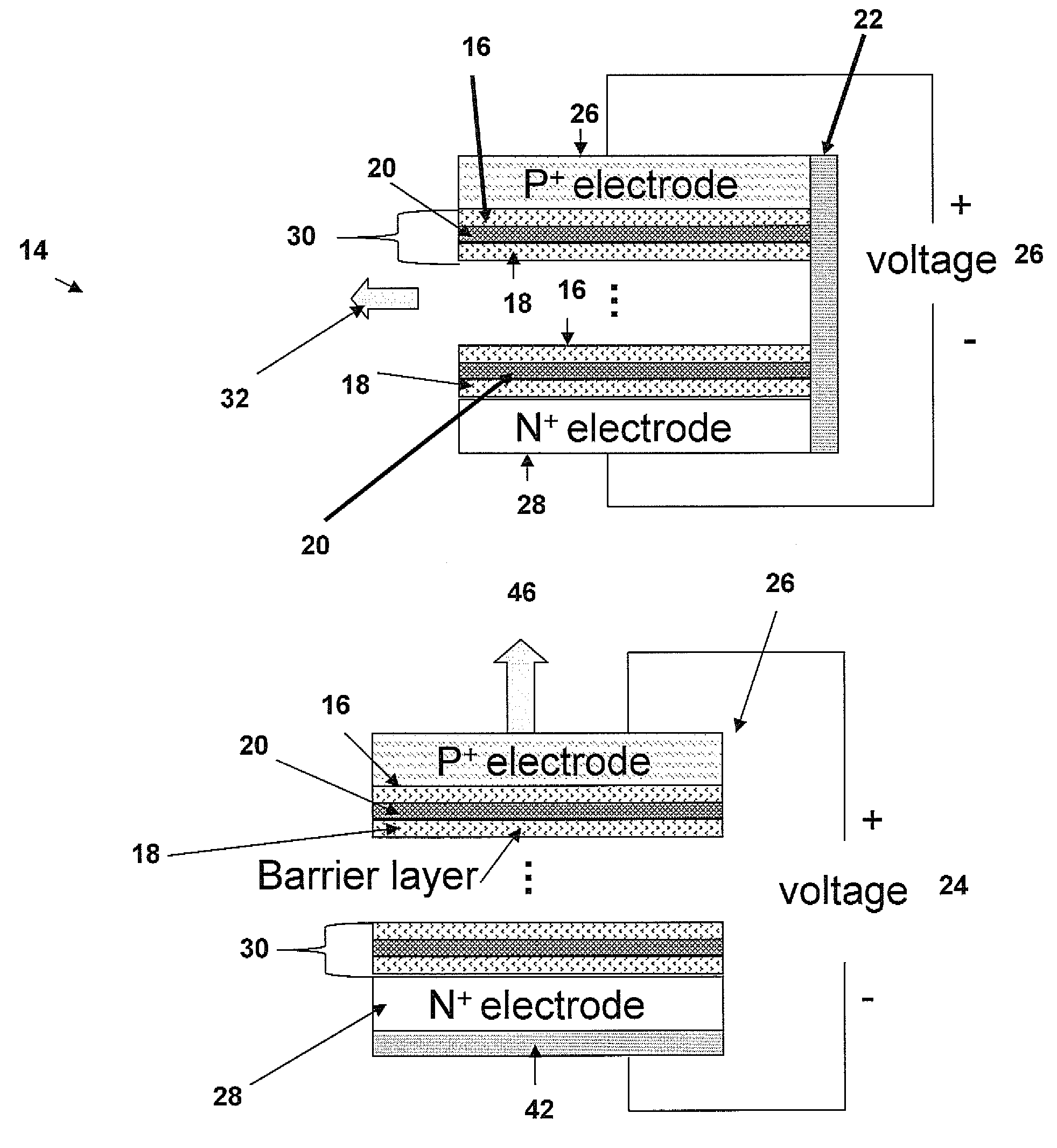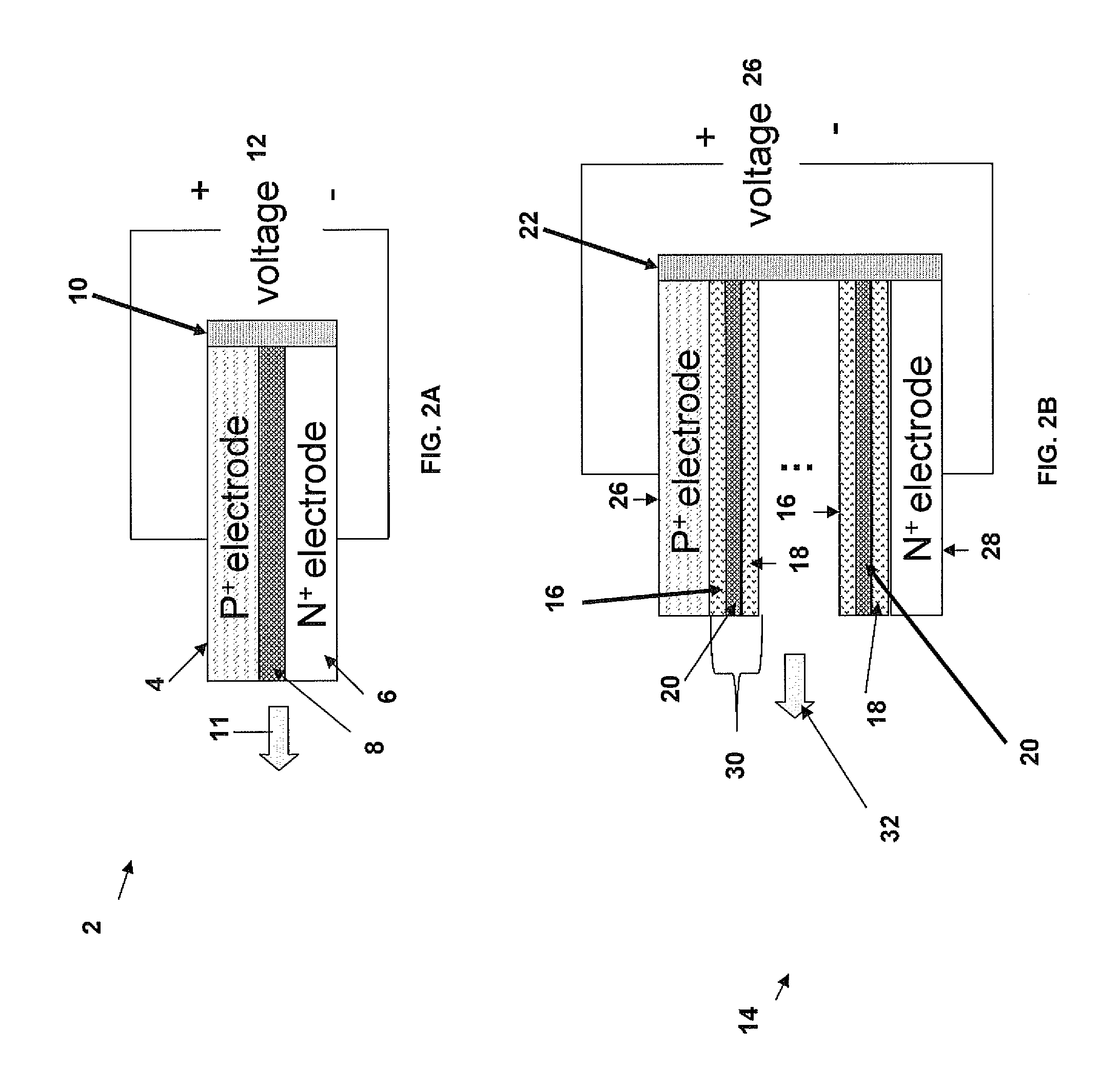Engineering emission wavelengths in laser and light emitting devices
a technology of light emitting devices and lasers, which is applied in the direction of lasers, semiconductor lasers, solid-state devices, etc., can solve the problems of mainly limited shift of emission wavelength to 530 nm, and efficiency is usually limited to a few percent, and achieves the effect of reducing the efficiency of semiconductor lasers and reducing the cost of lasers
- Summary
- Abstract
- Description
- Claims
- Application Information
AI Technical Summary
Benefits of technology
Problems solved by technology
Method used
Image
Examples
Embodiment Construction
[0008]The invention involves forming novel light emitting devices using indirect bandgap materials. Doped, indirect elemental semiconductor materials, such as germanium, can be engineered as a gain medium for lasing. The invention extends this observation to indirect compound semiconductor materials of various compositions of Al, In, Ga, P, and As for lasing in the wavelength range between 500 nm and 560 nm.
[0009]FIG. 1 shows an energy band diagram of an indirect band gap semiconductor material with an energy difference between the direct and indirect band gaps of less than 0.5 eV, which is defined as a “near-direct gap material” herein. These materials can be band-engineered by strain and n-type doping to achieve light emission at traditionally inaccessible wavelengths. Indirect gap materials are traditionally considered unsuitable for efficient light emitters and lasers due to the low radiative recombination rate. However, if the direct band gap of an indirect gap materials is clo...
PUM
 Login to View More
Login to View More Abstract
Description
Claims
Application Information
 Login to View More
Login to View More - R&D
- Intellectual Property
- Life Sciences
- Materials
- Tech Scout
- Unparalleled Data Quality
- Higher Quality Content
- 60% Fewer Hallucinations
Browse by: Latest US Patents, China's latest patents, Technical Efficacy Thesaurus, Application Domain, Technology Topic, Popular Technical Reports.
© 2025 PatSnap. All rights reserved.Legal|Privacy policy|Modern Slavery Act Transparency Statement|Sitemap|About US| Contact US: help@patsnap.com



